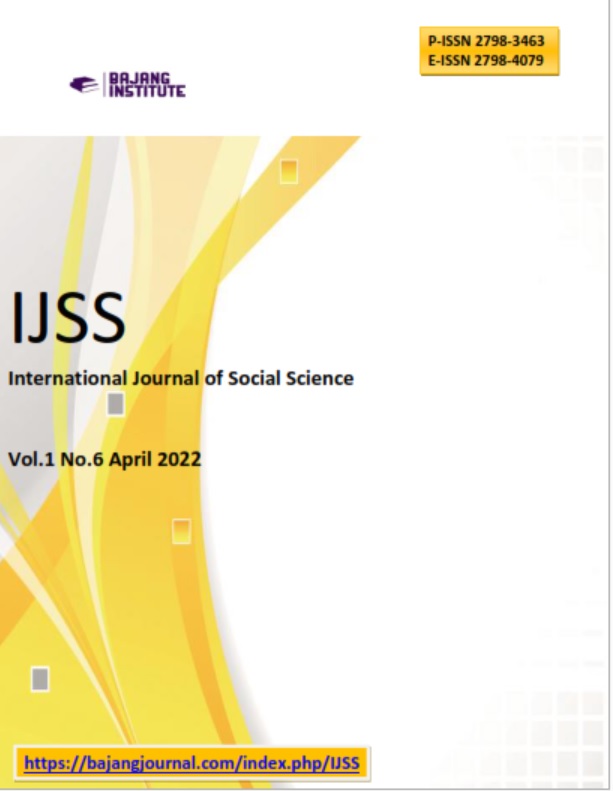APPLICATION TO DIAGNOSE INTERNET ADDICTION ON STUDENTS/ HIGHER EDUCATION BASED ON WEB-BASED USING FORWARD CHAINING METHOD
DOI:
https://doi.org/10.53625/ijss.v1i6.2109Keywords:
Diagnose Application, Forward Chaining Method, Internet Addiction, College Student, WebAbstract
The rapid development of technology makes everything easier. As time passes, technology is growing and human needs can be easily fulfilled. The problem in technological development that is going faster every day is that the development can not be stopped, but the standard of human need for technology will be higher. Researchers write the meaning of application and internet addiction which is the topic of this scientific work. The researcher is using the Forward Chaining method in the process of making this application and using the Waterfall model as a system development method. Researchers also include the understanding of the internet, and the object that researcher researched, which is college student. Researcher gather information by questionnaires and literature study, collecting information such as student data from various colleges and reviewing for books, journals and websites for reference to this research. This website is created to determine the internet addiction of college students in general so college students and parents can find out the impact and find solutions for those who have Internet addiction. Through the research process and the website development that has been done, the researcher concludes that the website that the researchers has created can be useful for students to determine the level of internet addiction owned by the student
References
Biggs, John (2015), Study: Heavy Internet Use Linked To High Blood Pressure In Teens, source:https://techcrunch.com/2015/10/06/study-heavy-internet-use-linked-to-high blood -pressure-in-teens/(accessed July 20, 2018).
Cook, Sam (2017), Technology and internet addiction: How to recognize it and recover from it., source:https://www.comparitech.com/internetproviders/technology-internet addiction/ (accessed June 15, 2018).
Hasibuan, A. (2014), “EXPERT SYSTEM ADDICTION USING THE INTERNET (INTERNET ADDICTION) USING THE CERTAINTY FACTOR METHOD”, Pelita Informatika Budi Darma, Vol. 6, No. 3
Heni, Andini (2016), In order not to become addicted to the Internet, here are the tips!, source: https://pijarpsikologi.org/agar-no-kecanduan-internet-ini-tipsnya/ accessed June 18, 2018)
Isaias, P. and T. Issa (2015), High Level Models and Methodologies for Information Systems, New York: Springer.
Lestari, SA and Rani Irma Handayani. (2017), “Expert System To Determine Children's Talent Based On Personality Using Forward Chaining Models”, Bina Insani ICT Journal, Vol.4, No.1.
Mujamil, Wahyudi (2015), History of the Student Movement from Time to Time, source: https://beritabojonegoro.com/read/960-sejarah-gerak-mahasiswa-dari-masa-kemasa.html (accessed May 25, 2018).
O'Brien, J. and G. Marakas (2012), Introduction to Information Systems – Loose Leaf, Issue 16. McGraw-Hill: Irwin.
Rahman, AF (2017), World Internet Speeds Soaring, How is Indonesia?, source: https://inet.detik.com/cyberlife/d-3774376/kecepatan-internet-dunia-melonjak how-indonesia (accessed June 5, 2018).
Satzinger, JW et al (2012), Introduction to Systems Analysis and Design An Agile, Iterative Approach, 6th Edition, Canada: Cengage.
SDLC Tutorials. (2015). SDLC Tutorialspoint Simplyeasylearning. Tutorials Point (I) Pvt. Ltd.
Sejiwa (2016), Dangers of Internet Addiction for Children and Adolescents, source: http://sejiwa.org/Danger-kecanduan-internet-bagi-anak-anak-dan-remaja (accessed 16 June 2018).
Turban, E. et al (2005), Decision Support Systems and Intelligent Systems, 7th Edition, New Jersey: Prentice-Hall.
Vermaat, ME et al (2016), Discovering Computers, Boston: Cengage Learning.
Young, KS and Cristiano Nabuco De Abreu (2010), Internet Addiction a Handbook and Guide to Evaluation and Treatment, New Jersey : John Wiley & Sons, Inc.
Yunita.(2014),"APPLICATION OF FORWARD CHAINING METHODS FOR DETECTION OF DAMAGE ON LAPTOP", Jurnal Techno Nusa Mandiri, Vol. XI, No.1.
https://apjii.or.id/content/read/39/264/Survei-Internet-APJII-2016 accessed October 11, 2018)
https://web.kominfo.go.id/sites/default/files/Laporan%20Survei%20APJII_2017_v 1.3.pdf(accessed October 11, 2018)
Lubis, Maesaroh. 2018. Kapita Selekta Pendidikan Islam. Tasikmalaya: Edu Publisher.
Majid, Abdul. 2014. Belajar dan Pembelajaran. BandungPT. Remaja Rosdakarya.
Mustakim, M. 2013.“Pemanfaatan Forum Komunikasi Komite Sekolah Dalam Peningkatan Mutu Pendidikan SMA di Kabupaten Gowa”, Jurnal Komunikasi Kareba, Vol. 2 No. 3
Salim, Ahmad. 2014. “Pendekatan Saintifik Dalam Pembelajaran Pendidikan Agama Islam (PAI) Di Madrasah”Jurnal Cendekia Vol 12 No. 1
Suardi, Moh. 2018. Belajar dan Pembelajaran. Yogyakarta: Penerbit Deepublish
Torang, Syamsul. 2014. Syamsir. Organisasi & Manajemen (Perilaku, Struktur, Budaya & Perubahan Organisasi). Bandung: Alfabeta.

















